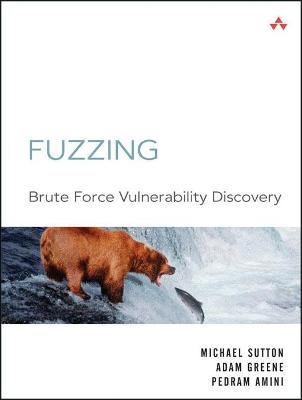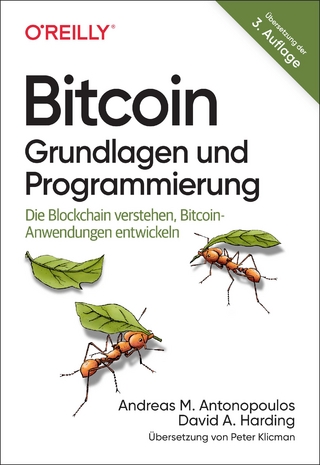
Fuzzing
Addison-Wesley Educational Publishers Inc (Verlag)
978-0-321-44611-4 (ISBN)
- Keine Verlagsinformationen verfügbar
- Artikel merken
Master One of Today’s Most Powerful Techniques for Revealing Security Flaws!
Fuzzing has evolved into one of today’s most effective approaches to test software security. To “fuzz,” you attach a program’s inputs to a source of random data, and then systematically identify the failures that arise. Hackers have
relied on fuzzing for years: Now, it’s your turn. In this book, renowned fuzzing experts show you how to use fuzzing to reveal weaknesses in your software before someone else does.
Fuzzing is the first and only book to cover fuzzing from start to finish, bringing disciplined best practices to a technique that has traditionally been implemented informally. The authors begin by reviewing how fuzzing works and outlining its crucial advantages over other security testing methods. Next, they introduce state-of-the-art fuzzing techniques for finding vulnerabilities in network protocols, file formats, and web applications; demonstrate the use of automated fuzzing tools; and present several insightful case histories showing fuzzing at work. Coverage includes:
• Why fuzzing simplifies test design and catches flaws other methods miss
• The fuzzing process: from identifying inputs to assessing “exploitability”
• Understanding the requirements for effective fuzzing
• Comparing mutation-based and generation-based fuzzers
• Using and automating environment variable and argument fuzzing
• Mastering in-memory fuzzing techniques
• Constructing custom fuzzing frameworks and tools
• Implementing intelligent fault detection
Attackers are already using fuzzing. You should, too. Whether you’re a developer, security engineer, tester, or QA specialist, this book teaches you how to build secure software.
Foreword xix
Preface xxi
Acknowledgments xxv
About the Author xxvii
PARTI BACKGROUND 1
Chapter 1 Vulnerability Discovery Methodologies 3
Chapter 2 What Is Fuzzing? 21
Chapter 3 Fuzzing Methods and Fuzzer Types 33
Chapter 4 Data Representation and Analysis 45
Chapter 5 Requirements for Effective Fuzzing 61
PART II TARGETS AND AUTOMATION 71
Chapter 6 Automation and Data Generation 73
Chapter 7 Environment Variable and Argument Fuzzing 89
Chapter 8 Environment Variable and Argument Fuzzing: Automation 103
Chapter 9 Web Application and Server Fuzzing 113
Chapter 10 Web Application and Server Fuzzing: Automation 137
Chapter 11 File Format Fuzzing 169
Chapter 12 File Format Fuzzing: Automation on UNIX 181
Chapter 13 File Format Fuzzing: Automation on Windows 197
Chapter 14 Network Protocol Fuzzing 223
Chapter 15 Network Protocol Fuzzing: Automation on UNIX 235
Chapter 16 Network Protocol Fuzzing: Automation on Windows 249
Chapter 17 Web Browser Fuzzing 267
Chapter 18 Web Browser Fuzzing: Automation &n
MICHAEL SUTTON Michael Sutton is the Security Evangelist for SPI Dynamics. As Security Evangelist, Michael is responsible for identifying, researching, and presenting on emerging issues in the web application security industry. He is a frequent speaker at major information security conferences, has authored numerous articles, and is regularly quoted in the media on various information security topics.Michael is also a member of the Web Application Security Consortium (WASC), where he is project lead for the Web Application Security Statistics project. Prior to joining SPI Dynamics,Michael was a Director for iDefense/VeriSign, where he headed iDefense Labs, a team of world class researchers tasked with discovering and researching security vulnerabilities.Michael also established the Information Systems Assurance and Advisory Services (ISAAS) practice for Ernst & Young in Bermuda. He holds degrees from the University of Alberta and The George Washington University. Michael is a proud Canadian who understands that hockey is a religion and not a sport. Outside of the office, he is a Sergeant with the Fairfax Volunteer Fire Department. ADAM GREENE Adam Greene is an engineer for a large financial news company based in New York City. Previously, he served as an engineer for iDefense, an intelligence company located in Reston, VA. His interests in computer security lie mainly in reliable exploitation methods, fuzzing, and UNIX-based system auditing and exploit development. PEDRAM AMINI Pedram Amini currently leads the security research and product security assessment team at TippingPoint. Previously, he was the assistant director and one of the founding members of iDefense Labs. Despite the fancy titles, he spends much of his time in the shoes of a reverse engineer–developing automation tools, plug-ins, and scripts. His most recent projects (a.k.a. “babies”) include the PaiMei reverse engineering framework and the Sulley fuzzing framework. In conjunction with his passion, Pedram launched OpenRCE.org, a community website dedicated to the art and science of reverse engineering. He has presented at RECon, BlackHat, DefCon, ShmooCon, and ToorCon and taught numerous sold out reverse engineering courses. Pedram holds a computer science degree from Tulane University.
Foreword xix
Preface xxi
Acknowledgments xxv
About the Author xxvii
PARTI BACKGROUND 1
Chapter 1 Vulnerability Discovery Methodologies 3
Chapter 2 What Is Fuzzing? 21
Chapter 3 Fuzzing Methods and Fuzzer Types 33
Chapter 4 Data Representation and Analysis 45
Chapter 5 Requirements for Effective Fuzzing 61
PART II TARGETS AND AUTOMATION 71
Chapter 6 Automation and Data Generation 73
Chapter 7 Environment Variable and Argument Fuzzing 89
Chapter 8 Environment Variable and Argument Fuzzing: Automation 103
Chapter 9 Web Application and Server Fuzzing 113
Chapter 10 Web Application and Server Fuzzing: Automation 137
Chapter 11 File Format Fuzzing 169
Chapter 12 File Format Fuzzing: Automation on UNIX 181
Chapter 13 File Format Fuzzing: Automation on Windows 197
Chapter 14 Network Protocol Fuzzing 223
Chapter 15 Network Protocol Fuzzing: Automation on UNIX 235
Chapter 16 Network Protocol Fuzzing: Automation on Windows 249
Chapter 17 Web Browser Fuzzing 267
Chapter 18 Web Browser Fuzzing: Automation 283
Chapter 19 In-Memory Fuzzing 301
Chapter 20 In-Memory Fuzzing: Automation 315
PART III ADVANCED FUZZING TECHNOLOGIES 349
Chapter 21 Fuzzing Frameworks 351
Chapter 22 Automated Protocol Dissection 419
Chapter 23 Fuzzer Tracking 437
Chapter 24 Intelligent Fault Detection 471
PART IV LOOKING FORWARD 495
Chapter 25 Lessons Learned 497
Chapter 26 Looking Forward 507
Index 519
| Erscheint lt. Verlag | 12.7.2007 |
|---|---|
| Verlagsort | New Jersey |
| Sprache | englisch |
| Maße | 177 x 233 mm |
| Gewicht | 800 g |
| Themenwelt | Informatik ► Netzwerke ► Sicherheit / Firewall |
| Wirtschaft ► Betriebswirtschaft / Management ► Wirtschaftsinformatik | |
| ISBN-10 | 0-321-44611-9 / 0321446119 |
| ISBN-13 | 978-0-321-44611-4 / 9780321446114 |
| Zustand | Neuware |
| Informationen gemäß Produktsicherheitsverordnung (GPSR) | |
| Haben Sie eine Frage zum Produkt? |
aus dem Bereich


